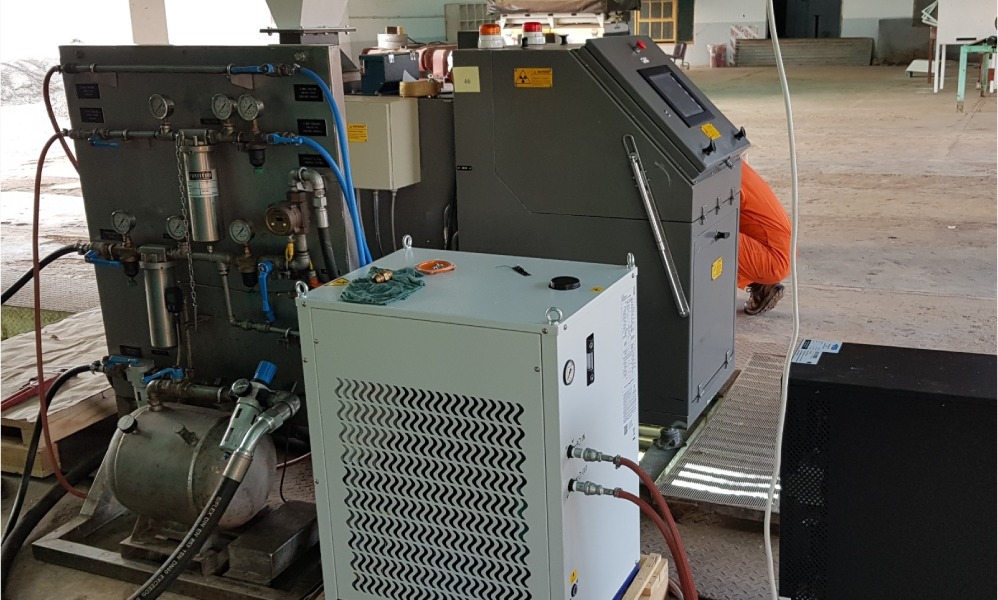News
Key advancements in XRF focus on using high-resolution synchrotron-based techniques for trace element analysis
The diamond market is seeing mixed activity across the globe, driven by holiday shopping in the US and traditional shutdowns in India.

Recent advances in XRF in diamonds focus on using high-resolution, synchrotron-based techniques for trace element analysis, chemical state analysis of impurities, and identifying synthetic diamonds. Developments include using XRF with other techniques like X-ray absorption spectroscopy (XAS) for more complete analysis and using nanoprobes for spatial resolution down to 50 nm. Researchers are also creating methods to analyze trace elements in synthetic diamonds with high precision, sometimes achieving concentrations far greater than in natural diamonds.
Key advancements
- High-resolution spatial mapping:
Synchrotron XRF, especially with nanoprobe techniques, provides nanoscale mapping of elemental distributions within a diamond, revealing the relationship between elements and growth sectors.
Using techniques like XANES (X-ray Absorption Near Edge Structure) spectroscopy alongside XRF, researchers can determine the chemical state and site of impurities within the diamond lattice (e.g., the location of nickel atoms).
- Analysis of synthetic diamonds:
XRF is crucial for characterizing synthetic diamonds, including:
- Trace element analysis: Detecting and quantifying trace impurities (like Co and Mn) incorporated from metallic solvents used during synthesis.
- Synthetic vs. natural identification: Identifying synthetic diamonds based on their trace element composition, which differs from natural diamonds.
- Detecting intentional doping: Synthesizing and analyzing diamonds with specific doped atoms, like Europium (Eu), to achieve high concentrations (e.g., 51 ± 5 ppm) for specific properties.
- Integration with other techniques:
XRF is increasingly combined with other techniques like X-ray diffraction (XRD) and XAS to provide more comprehensive elemental and structural information about the sample.
- Gemological applications:
In the gemological industry, XRF is used to distinguish natural from synthetic diamonds and to detect treatments like fracture filling by showing the elemental composition of the filling agents.
National News
CBIC consolidates customs notifications on precious metals and gemstones

In a move aimed at simplifying compliance and promoting ease of doing business, the Central Board of Indirect Taxes and Customs (CBIC) has consolidated multiple earlier notifications governing the import of precious metals and stones among other goods into a single comprehensive notification – No. 45/2025-Customs, issued on 24th October 2025.
The unified notification brings under one umbrella all previous duty-related circulars for gold, silver, platinum, diamonds (natural and lab-grown), and coloured gemstones. It replaces a wide range of earlier notifications dating back to 1994, without altering the prevailing duty or IGST rates.
As per the consolidated schedule, rough diamonds continue to attract zero duty, while rubies, emeralds, sapphires, and rough coloured or semi-precious stones remain at 0.5%. Gold and silver dore bars, refined bars, and findings are subject to a 5% basic customs duty Lab-grown diamonds and pre-forms of precious and semiprecious stones retain existing Duty.
-

 National News11 hours ago
National News11 hours agoCandere by Kalyan Jewellers – Stack Jewellery for Men: A Guide to Layering and Expression
-

 JB Insights1 week ago
JB Insights1 week agoDhanteras 2025: Strong Demand and Value-Driven Trends
-

 GlamBuzz7 hours ago
GlamBuzz7 hours agoNow, don’t just buy gold. Buy SmartGold with Bollywood actress Sonali Bendre
-

 National News6 hours ago
National News6 hours agoCBIC consolidates customs notifications on precious metals and gemstones





